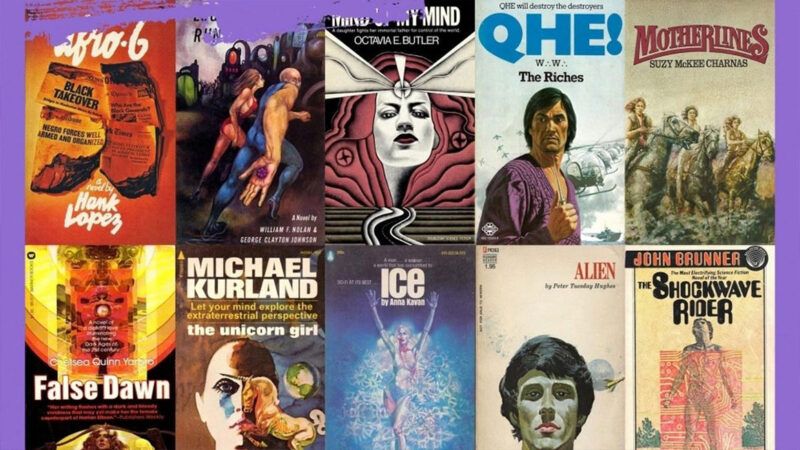Dangerous Visions and New Worlds
An anthology looks back at science fiction's New Wave.

Like many American kids, I grew up reading science fiction. Since I was born in 1970, that meant the tales I took in were frequently filled not just with spaceships and time travel but with psychedelic drugs, radically reimagined gender roles, thinly veiled metaphors for Vietnam, and genrified updates of the modernists' literary experiments. I grew up, in short, in the shadow of the New Wave, a movement that shook up science fiction with countercultural ideas.
The best thing about Dangerous Visions and New Worlds: Radical Science Fiction, 1950–1985, an uneven but often incisive anthology of essays from PM Press, is that it covers the New Wave moment without limiting itself to the New Wave movement. The most talented New Wave writers are covered here—there are essays on J.G. Ballard, Octavia Butler, Barry Malzberg, and others—but so are TV tie-ins and porny paperbacks, showing how such ideas seeped through society.
The editors also understand that not every experimentalist was on the political left. One of the best essays is Nick Mamatas' appreciation of R.A. Lafferty, a rock-ribbed Catholic reactionary whose wonderfully bizarre stories "were simply too weird for either the literary or popular tributaries of the 'mainstream.'"
Robert Heinlein shows up too, though he was a stalwart of the old guard that the New Wave was challenging. One essay contrasts two memorable novels about extraplanetary anarchist communities: Heinlein's The Moon Is a Harsh Mistress and Ursula LeGuin's The Dispossessed. The author finds more differences than similarities between Heinlein's individualist anarchism and LeGuin's collectivist kind. But both books were products of the same historical moment, and—I speak from experience—both could have similar effects on a young reader.


Show Comments (24)